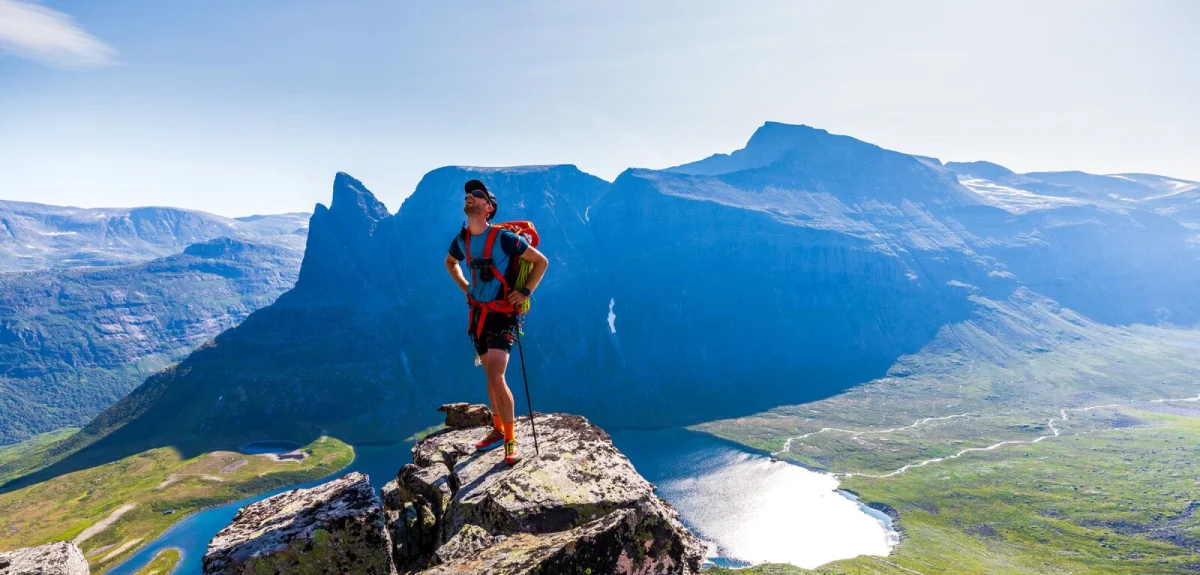
Five Norwegian hiking trails
Here you will find Norway's most spectacular views.
Norwegians love to go on hikes, perhaps it is the Norwegian Tourist Association (DNT) is the largest organization of its kind in Norway with over 300,000 members. Its unique network of cabins are open to everyone. Members get discounted rates, but the price for non-members is still very reasonable compared to hotels.
There are a total of 550 cabins around the country and they are known for their cozy atmosphere. Some of the cabins are staffed and the hosts offer three-course dinners and can provide local information on the surroundings. Unmanned cabins are either open all the time or can be opened with a main key that you can ordered from DNT. Living in a DNT cabin costs between 200 and 300 NOK per night in an unmanned cabins and a manned cottage is approximately 900 NOK including a three-course dinners.
The Norwegian state-owned forest company, Statskog, also has 70 cottages for short-term rental in beautiful hiking areas in different parts of Norway.
Five hiking trails to discover in Norway
Romsdalseggen
Romsdalseggen offers accessible and spectacular views across the Romsdal mountains and fjords, and the river Rauma which snakes its way down into the valley towards the town of Åndalsnes. The hike takes six to eight hours. After the first climb, you can choose the standard hike along the ridge itself, or the slightly easier route that avoids sections that are a little vertigo inducing. The hike is open from spring until the snow arrives in fall, but should only be done in good weather. Romsdalseggen is a long hike, but for older children with mountain experience, it is a great trip. The so-called “family route” is about six hours long and is a little less exposed than the normal route.
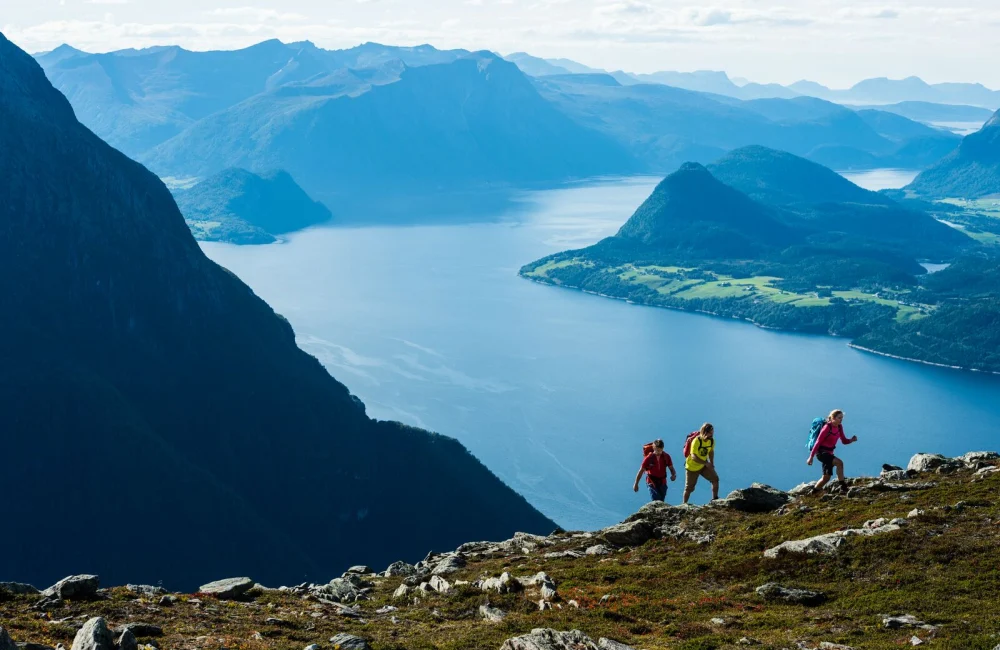
Besseggen
The Besseggen trail provides fantastic views over a wild mountain area. The trail is not particularly grueling, nor is it especially exposed, but you still gain a sense of headiness if you cast your eyes down towards the green waters of the glacial Lake Gjende on one side and the deep blue Lake Bessvatnet on the other. It’s best to spend the night at Gjendesheim and then take the boat to Memurubu across Lake Gjende in the morning and start from there. Besseggen is 16km long and 1,743m above sea level at the highest point. Allow around eight hours for the entire trip. The peak season is July, August and the first two weekends in September. Children aged 7 and above who are used to walking should easily manage the walk.
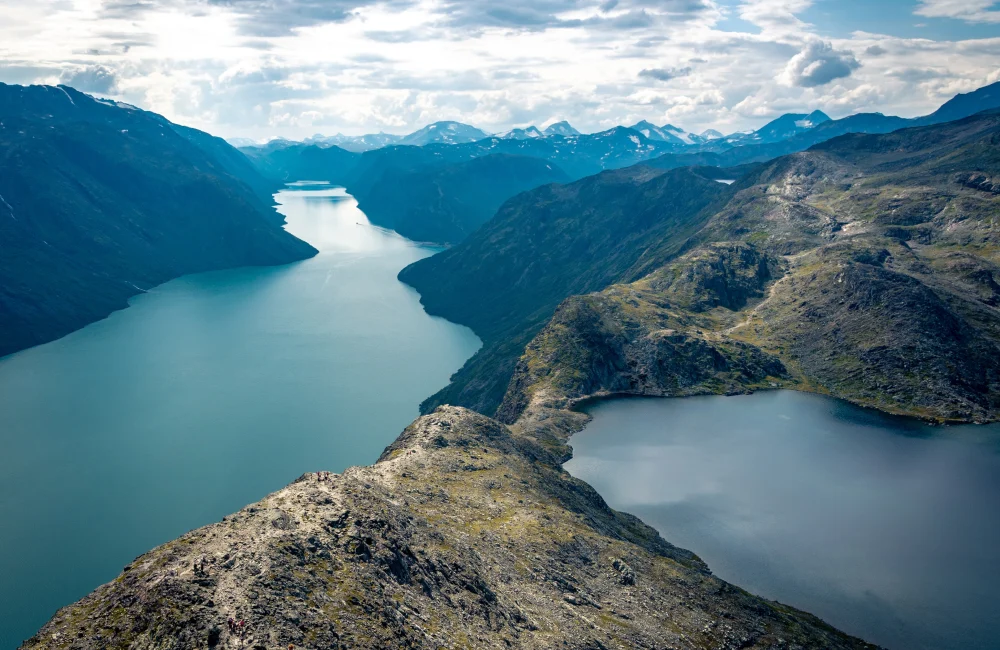
Preikestolen (Pulpit Rock)
Over 270,000 people make the hike to the dizzy heights of this mountain plateau every year. For those used to walking on uneven terrain, the hike will take about two hours. It will take children and less fit walkers around two to three hours each way. The trail rises 330m along its 3.8km distance. The end point is a flat plateau that sits 604m above a sheer drop to the sea. The path is broad, and stone steps have been built at several points along the way. Don’t underestimate the hike though; it’s longer than you think. Perhaps combine the hike with a meal or overnight stay at Preikestolen mountain cabin. The best time to go is between April and October.
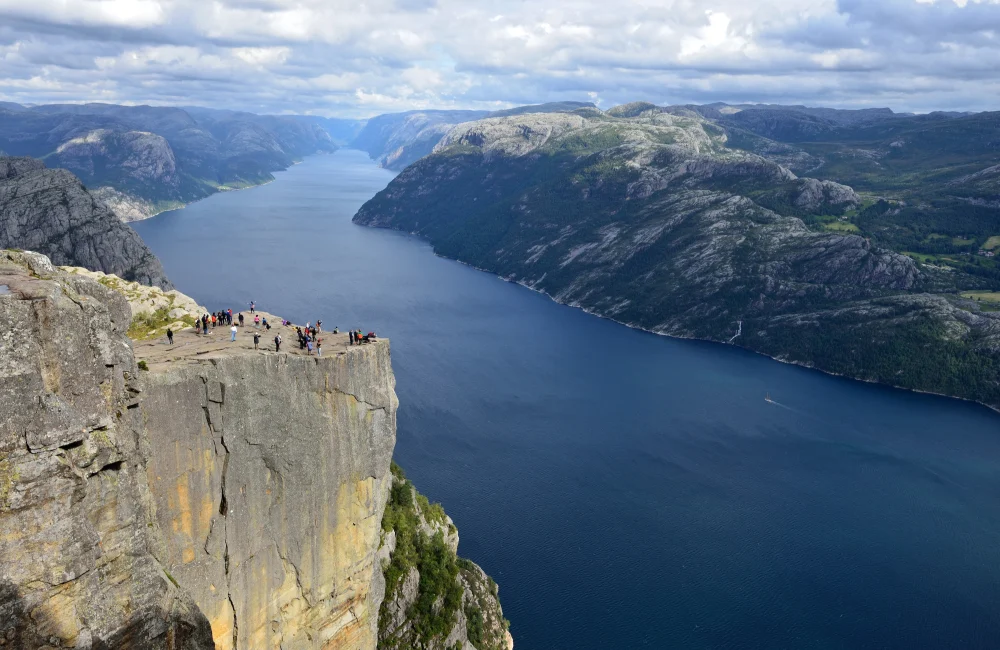
Kjerag
Kjerag rises majestically, with a 1,000m sheer drop, above Lysefjord close to Stavanger. The vertical, polished smooth granite face has long been a sight to behold from the fjord, but if you’re looking for a different experience, hike up to to Kjeragplatået and Kjeragbolten. Kjeragplatået is a barren, smoothly-worn rock plateau. The terrain is heavy going and demanding, but a bird’s eye view of Lysefjord is waiting at the top, and from here it is easy to spot the famous Kjeragbolten or Kjerag Boulder. This much-photographed boulder is wedged between two vertical rock faces and is easy to step onto. The hike to Kjerag is 10km and takes around five hours. The elevation is 750m. This is a pretty tough hike and is not very suitable for children under seven years old. The trip can be done throughout the summer season.
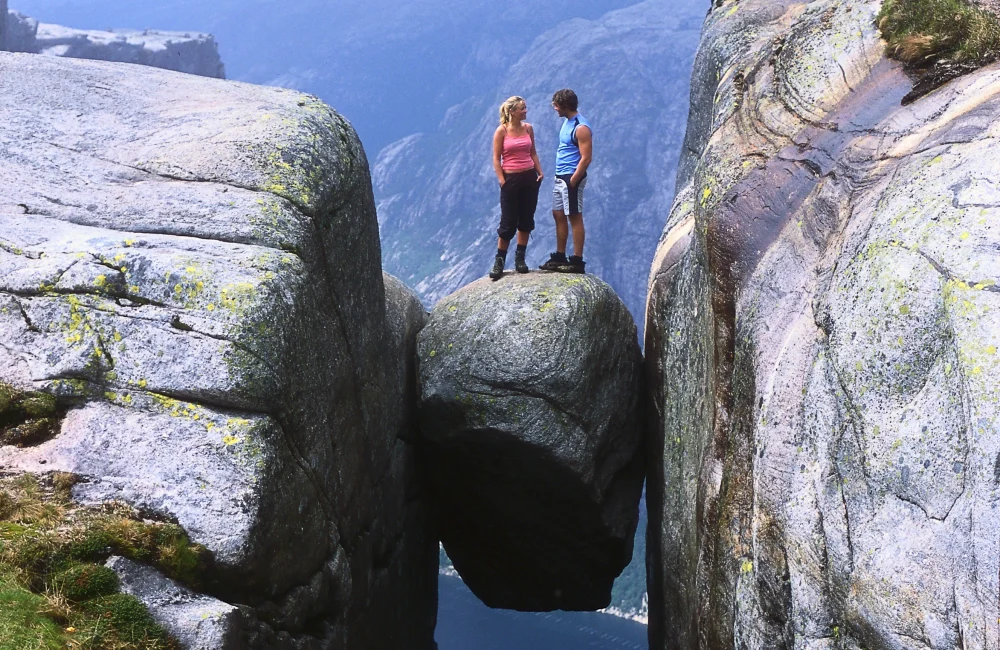
Galdhøpiggen
Norway’s highest mountain offers magnificent views over the Jotunheimen mountain area. But Galdhøpiggen, 2,469m above sea level, is more than a mountain. It is also a symbol of the relationship Norwegians have with their mountains, and most Norwegians know what 2,469 stands for. But you don’t need to be a rock climber to reach the top. From Juvasshytta mountain station it’s a relatively straightforward hike. The round trip takes around seven hours. From Juvasshytta, make your way across the Styggebrean glacier (you will need to be accompanied by a guide for this) and up to the summit. Return the same way or down to Spiterstulen, another cabin. It’s a family-friendly route that is suitable for children used to walking. Although children have to be aged 7 or older to cross the Styggebrean glacier. At the summit of Galdhøpiggen, there is a station that serves soft drinks and snacks. You can also buy postcards here. The cabin used to be a post office, the highest in northern Europe.
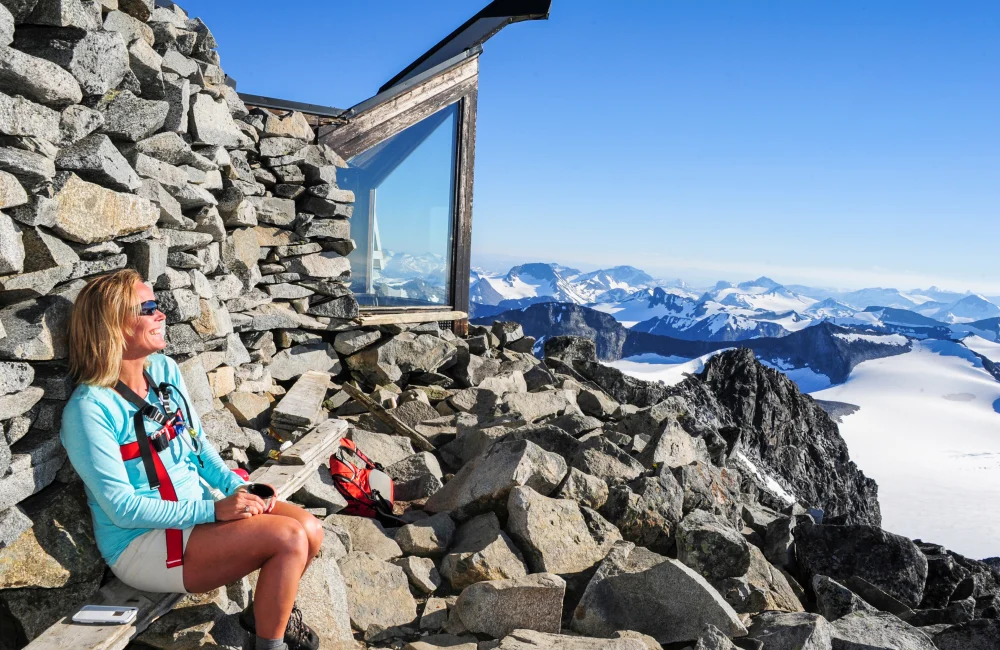
Useful tips for hiking in Norway
Trip planning, cabins and offers in Norway’s mountain country: dnt.no
Cabins and trip advice: statskog.no og inatur.no
For trip planning and advice: ut.no
Outdoor living magazine with the latest news from the scene in Norway: utemagasinet.no
Weather forecasts: yr.no
Text by Hans-Kristian Krogh-Hanssen